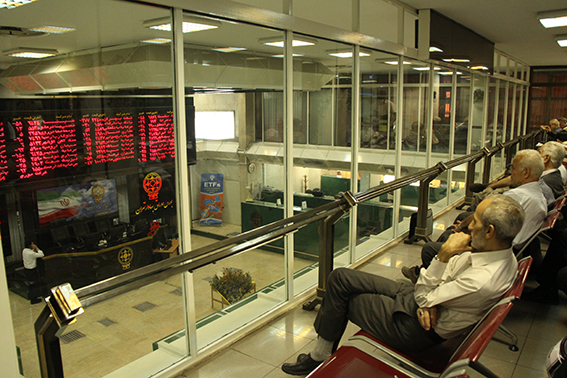Stocks’ uptick on Wednesday couldn’t compensate for the Tehran Stock Exchange benchmark’s losses in the week as the TEDPIX slipped 482 points or 0.67 percent to end a choppy week lower at 71,443, SENA reported.
According to the TSE website, despite the ongoing downward trend at the equity market, the total value of trading of stocks and subscription privileges surged to 6.31 trillion rials, setting a 25.1 percent increase compared to last week.
From the start of week on Saturday till Wednesday’s close, nearly 2.05 billion shares changed hands, indicating an 11.7 percent increase compared to last week, although showing 16 percent decrease compared to the week ending September 3.
According to the report, 383,405 fixed rate bonds were traded, valued at 384 billion rials, illustrating 34 percent increase.
During 5 trading days, the manufacturing and telecommunication group topped growth, leaving 18.73 percent positive impact on the market’s main index. The coal extraction group as well as oil and gas extraction, exploration and other related services set other positive endings at the market, growing 9.91 percent and 1.69 percent, respectively.
The TSE’s major indices failed to turn positive compared to their previous performance as the first market index gave up 444 points or 0.84 percent to 52,443.2. The second market index tumbled 393 points or 0.28 percent to 141,783.7. The free floating index slipped 805 points or 0.99 percent to 80,153. The industry index was down 338 points or 0.55 percent to 60,584, and the blue chip index shed 30 points or 0.92 percent to 3,287.5.
Iran’s capital market is experiencing one of its toughest periods ever as industries are facing stagflation and limited banking resources is indeed a significant impediment to the economic growth.
Unlike many other countries, Iran’s stock exchange has different factors contributing to the rise and fall of its benchmark. Here, a few listed major companies can heavily influence the main index while ups and downs for most other companies, i.e. small ones, are grossly ignored.
There are companies with substantial earnings in a certain period of time, but individual investors are relatively reluctant to invest in these firms as they do not have a visible impact on the market trend.
Some market analysts believe that the Securities and Exchange Organization should delineate the investors about the fundamentals of such a distinctive equity market through comprehensive courses. This move will help investors to stay away from the market speculators and watch the listed firms precisely, while tracking the fluctuations in the capital market.
The government is apparently aware of the issue of market illiquidity. Liquidity is hallmark of the capital market and the officials are working in full force to shift the downward trend of the TSE.
A variety of options have been taken into consideration to tackle problems facing the capital market, including tax exemption for manufacturers as well as modifying insurance for corporations -- those who have put up their properties as collateral to get loans.
As the market observers forecast, the Q3 and Q4 would not be gloomy periods in the corporations’ current fiscal year. As the companies are about to reveal their six-month reports, the slight economic growth and the government’s action plan to exit recession would potentially show their impact on the companies’ performance.
Inflated prices of products of listed companies, a likely agreement between Iran and the P5+1 group of major world powers, and a potential cut in the banking interest rates are among the key factors that may trigger a shift on the market trend.


